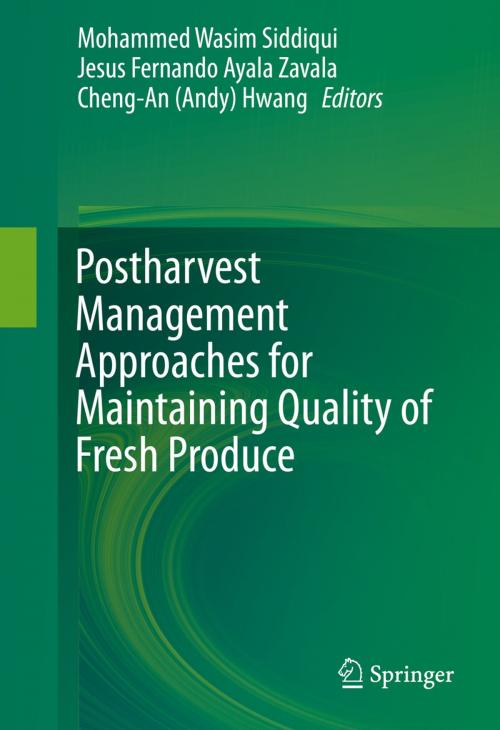Postharvest Management Approaches for Maintaining Quality of Fresh Produce
Nonfiction, Science & Nature, Technology, Food Industry & Science| Author: | ISBN: | 9783319235820 | |
| Publisher: | Springer International Publishing | Publication: | February 24, 2016 |
| Imprint: | Springer | Language: | English |
| Author: | |
| ISBN: | 9783319235820 |
| Publisher: | Springer International Publishing |
| Publication: | February 24, 2016 |
| Imprint: | Springer |
| Language: | English |
The volume presents existing and novel management approaches that are in use or have a great potential to be used to maintain the postharvest quality of fresh produce in terms of microbiological safety, nutrition, and sensory quality. In comparison to traditional synthetic chemicals, these eco-friendly molecules are equally effective with respect to slowing the physiological and biochemical changes in harvested produce. Application of terpenic compounds, phenolic compounds, salicylic acid, methyl jasmonates, hydrogen peroxide, ethanol, sulphur compounds, polyamines, plant growth regulators, active carbohydrates, ozone, hexanal and nitric oxide have been proven effective in minimizing storage disorders like chilling injury, scald, fungal diseases like stem-end rot, blue mould rot, green mould rot, anthracnose, regulation of ripening and senescence, etc. This book will be a standard reference work for the management of shelf life in the fresh produce industry.
The volume presents existing and novel management approaches that are in use or have a great potential to be used to maintain the postharvest quality of fresh produce in terms of microbiological safety, nutrition, and sensory quality. In comparison to traditional synthetic chemicals, these eco-friendly molecules are equally effective with respect to slowing the physiological and biochemical changes in harvested produce. Application of terpenic compounds, phenolic compounds, salicylic acid, methyl jasmonates, hydrogen peroxide, ethanol, sulphur compounds, polyamines, plant growth regulators, active carbohydrates, ozone, hexanal and nitric oxide have been proven effective in minimizing storage disorders like chilling injury, scald, fungal diseases like stem-end rot, blue mould rot, green mould rot, anthracnose, regulation of ripening and senescence, etc. This book will be a standard reference work for the management of shelf life in the fresh produce industry.















